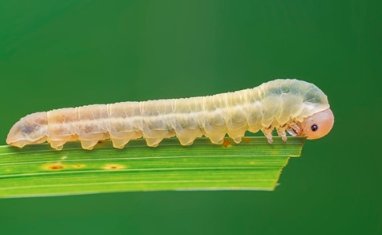Researchers in Australia have unearthed fossilized remains of a 555-million-year-old worm-like creature, which experts now believe to be the first ancestor of all animals—including humans. The discovery, made possible through modern 3D scanning technology, has stunned the scientific community, confirming long-standing evolutionary predictions.
The Ancient Origins Of Bilaterians
The fossil belongs to a tiny creature called Ikaria wariootia, identified as the earliest known bilaterian—an organism characterized by a distinct front and back, symmetrical sides, and a connected gut system. The study, conducted by a team of geologists from the University of California, Riverside, was recently published in the Proceedings of the National Academy of Sciences.
“This is what evolutionary biologists predicted,” said Professor Mary Droser, a geology expert involved in the study. “It’s really exciting that what we have found lines up so neatly with their prediction.”
The discovery provides crucial evidence for a major evolutionary leap. Multicellular organisms existed long before Ikaria wariootia, but most lacked defined body structures. Unlike its predecessors, this creature exhibited a level of complexity that laid the foundation for the vast array of animal life that followed—including worms, insects, fish, reptiles, birds, and mammals.

Tiny Fossils, Major Breakthrough
Finding fossils from such minuscule creatures seemed nearly impossible. Until recently, scientists believed these soft-bodied organisms had left no trace in the fossil record. But researchers at Nilpena, South Australia, have proved otherwise.
For 15 years, scientists knew that tiny, preserved burrows at the site must have been created by some kind of bilaterian. However, they lacked the tools to identify the organism responsible. That changed with the advent of 3D laser scanning.
- The scans revealed microscopic impressions resembling grains of rice.
- These impressions displayed clear indications of a head, tail, and muscle grooves.
- Their placement in the burrows matched the behavior expected of a primitive, mobile bilaterian.
Scott Evans, a researcher working with Droser, described the moment they confirmed their findings: “When we saw the scans, we knew this was something special.”
How Ikaria Wariootia Fits Into Evolution
The oldest known multicellular organisms, the Ediacaran biota, lived during the Ediacaran Period (635-541 million years ago). Many of these species were bizarre, lacking mouths or digestive systems. But Ikaria wariootia was different—it had a simple digestive tract, making it the missing link between primitive lifeforms and modern animals.
Here’s how it compares to other early life forms:
| Feature | Ediacaran Biota | Ikaria Wariootia | Modern Bilaterians |
|---|---|---|---|
| Body Symmetry | Variable or None | Bilateral | Bilateral |
| Digestive System | Absent or Unclear | Present | Present |
| Mobility | Limited or None | Likely Burrowing | Advanced |
| Fossil Evidence | Rare and Unclear | Confirmed | Extensive |
This discovery shows that the transition from simple, immobile life forms to structured, mobile creatures happened earlier than previously thought.
The Role Of Technology In The Discovery
Without technological advancements, such a breakthrough might never have happened. Traditional fossil-hunting methods wouldn’t have detected Ikaria wariootia. The fossils were simply too small.
- Researchers used laser scanning to reconstruct the fossils in high detail.
- The scans helped differentiate Ikaria wariootia from other microfossils.
- Experts could finally confirm what they had suspected for years: the first bilaterian ancestor had been found.
“It’s remarkable,” said Droser. “For so long, we thought these creatures were lost to time. Now, thanks to modern imaging, we can finally study them.”
A Window Into Earth’s Earliest Ecosystems
The Nilpena fossil site has provided scientists with a rare glimpse into life over half a billion years ago. Ikaria wariootia lived in an ocean environment, burrowing through sediment and feeding on organic matter. Its behavior was simple, but its impact on evolution was monumental.
“This tiny creature was the blueprint for all complex animal life,” said Evans. “Without it, life as we know it might never have existed.”
As researchers continue to examine the fossils, they hope to uncover even more about the origins of animal evolution. For now, Ikaria wariootia stands as one of the most significant finds in paleontology—proof that even the smallest creatures can shape the course of history.













